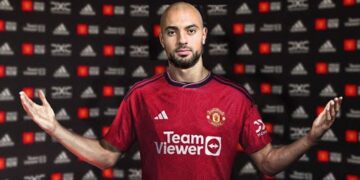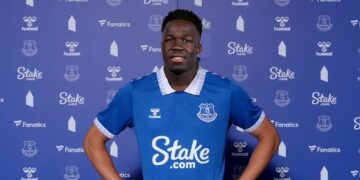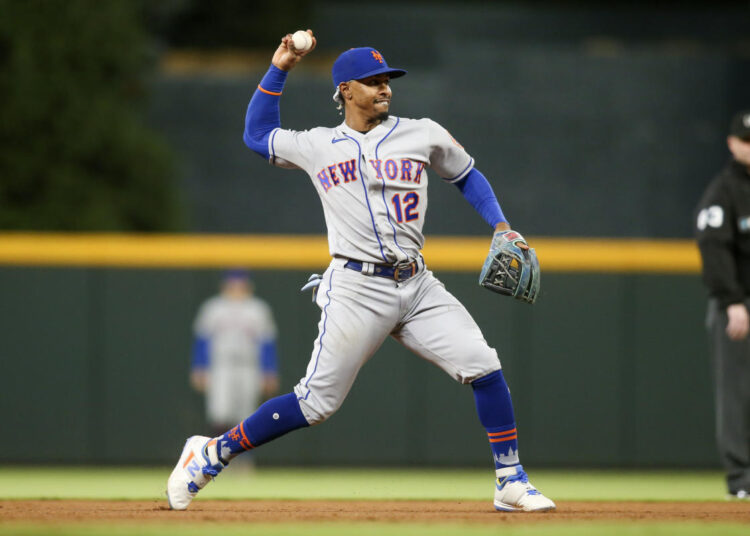The past few years have certainly made it seem like we’re living in a golden age of shortstops.
First 22-year-old Fernando Tatis Jr., then with 143 big-league games under his belt, signed a 14-year, $340 million extension with the San Diego Padres. It was the third-largest contract in Major League Baseball history. That lasted a month before it was surpassed by Francisco Lindor’s 10-year, $341 million extension with the New York Mets signed on the eve of Opening Day 2021.
Lindor’s long-term commitment took one of the top players at the position off the free-agent market preemptively. Nevertheless, the lockout-divided offseason that followed was headlined by Javier Báez, Carlos Correa, Corey Seager, Trevor Story and (longtime shortstop turned primarily second baseman) Marcus Semien. Seager, Story, Semien and Báez received four of the top seven contracts by total dollars that offseason. Correa settled for a short-term deal with a higher average annual value than any of them.
A year later, free agency was again dominated by an All-Star shortstop class of Trea Turner, Xander Bogaerts, Dansby Swanson and Correa, back out on the market. Among position players, only Aaron Judge, hot off a historic season, signed for more money than any of them — even after Correa’s guaranteed total took a $150 million hit.
Aside from Tatis, those players are all approaching or just past 30, but the wave of potential franchise cornerstones playing short doesn’t stop there. Heading into the past two seasons, the top prospect in baseball was a shortstop — that’s Tampa Bay’s Wander Franco and Kansas City’s Bobby Witt Jr. — and both have since graduated to the majors. The World Series MVP last season was a rookie shortstop — and not one of those two.
That’s largely anecdotal evidence, of course, but it holds up to further scrutiny. Even though money isn’t a perfect barometer for production, it’s significant that eight of the top 30 contracts in MLB currently (ranked by total guaranteed value) belong to shortstops; that’s nearly one-third for one of the nine positions. The mega-deals these days have reached new heights by tacking on length, a proposition that perhaps teams are more comfortable with when it comes to shortstops, who can move off that position as they age and remain productive.
And, indeed, several already have. Semien became a full-time second basemen when he joined the Toronto Blue Jays in deference to Bo Bichette, a role that was solidified when the Texas Rangers signed Semien and Seager within days of each other. Story moved to second when he joined the Red Sox, where Bogaerts had spent a decade at short. In departing Boston for San Diego this winter, Bogaerts displaced Tatis, whose injury history and long absence had already made a move to the outfield seem likely. Story would’ve slid back to short — admittedly, to many Red Sox fans’ frustration at the lack of a better defensive option — if not for surgery that will keep him off the field for the start of 2023. Even Correa, a Platinum Glove award winner, planned to cede the position to Lindor when it looked like he would end up a Met.
In some ways, all of that makes it seem like perhaps “shortstop” is an overly broad designation and that’s how it manages to be inclusive of so many notable players and contracts. But the willingness of teams such as the Padres to stock up on shortstops and pay them handsomely to play out of their position or deep into their 30s is indicative of a defining feature of the new kind of star shortstop: This defensively demanding position has become a source of significant offense.
Six years ago, wrote about how the glove-first shortstop was disappearing amid a surge of power-forward bats at the position. That piece highlighted the number of home runs hit by a wide swath of shortstops in 2016. The group of young guys driving that trend includes many of the players who reached free agency the past two years.
If you look at the number of home runs produced by the shortstop position each season, 2016 is fifth all time, and the top five are 2019, 2021, 2018, 2017 and 2016, with 2022 sixth. That, of course, is influenced by the growing emphasis on home runs in MLB generally and the condition of the physical baseball in recent years (though 2022 was intended to reverse that effect).
But the trend holds up if you shift focus to more relative and contextualized offensive stats. The top five shortstop seasons by WAR are 2021, 2019, 2018, 2022 and 2016. The first year before 2000 to appear on the list is 1993, at 18th. Last season, 10 teams — that’s one-third of the league — had a shortstop as their highest position player by WAR.
Of course, shortstops benefit from positional WAR adjustments on the defensive side. So let’s look at a purely offensive stat, still scaled to account for the run-scoring environment. The top five shortstop seasons by wRC+ are 2020, 2019, 2021, 2018, and 2022. If you exclude the shortened 2020, the list goes 2019, 2021, 2018, 2022 and 2016.
This is all perhaps more remarkable because the single best player in baseball is not a shortstop. By which I mean Mike Trout has been around for a while, occupying that space seemingly by default, and also Aaron Judge hit 62 home runs last season, and, in fact, a shortstop has not won MVP in either league since Jimmy Rollins did so in 2007. The position is not top-heavy so much as it is totally stacked.
The trend, as it were, toward middle-of-the-lineup shortstops has undoubtedly been made possible and preferable by improvements to defensive positioning. In an era of optimized starting points and the leeway to make use of shifts, players don’t have to possess quite as much range to successfully man the infield.
But some of that is set to change in 2023, with new rules limiting infielder defensive positioning. Perhaps that will nudge the priorities of the position back toward defensive prowess, but I would be careful not to overstate that effect. The rules as written still allow for plenty of flexibility, and the information that allows teams to align their defense for each opposing batter isn’t going away. The more salient question is whether the current crop of super-productive shortstops will give way to yet another wave of stars at the position or this is truly a unique golden age of shortstops.
All of which is to say that, after being tasked with ranking the top 10 shortstops in the game right now for MLB Network (list coming next week!), I think I’m correct in saying that I got the most difficult assignment, a thankless job guaranteed to infuriate fans of all the extremely good shortstops who were pushed out by all the even better options.
Read the full article here


























